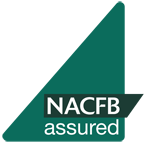Bridging Finance Trends: Q2 2024 Analysis
--960.jpg)
Bridging Finance Trends: Q2 2024 Analysis
Bridging finance sector has experienced several notable changes, in the second quarter of 2024, keys factors being:
- Gross Lending up 2.9%, the highest ever Q2 reaching £201.8 million up from £196.2 million. Figures suggest a healthy level of activity within the sector, potentially driven by increased demand due to competitive pricing with average pricing at 0.86% pm
- Chain Break the most popular purpose for bridging
- Reduced Completion Time - Average processing times hits a three year low of 52 days. Results may have been influenced by time-sensitive transactions such as auction purchases and chain breaks which have both recently seen a significant increase in demand.
- Finance for Auction purchases hits a all time high, most likely due to savvy buyers purchasing undervalued properties
- Average Loan To Value(LTV) fell to 59.3% from 60%
- Second charge transactions saw a significant decline in after a strong Q1 at 21.3% to just 11.6%. This sharp decrease suggests a shift in borrower priorities as borrowers leaned towards new borrowing rather than releasing equity
- Unregulated transactions, increasing to 54.2% in Q2 from 51% in Q1. This suggests a shift as more investors and landlords adapt to the current market conditions.
Changing Purposes of Bridging Finance
The purposes for which bridging finance is used have evolved significantly over the past quarter:
- Auction Purchases: Saw the most substantial growth, with its share of total transactions rising to 14% in Q2 from 9% in Q1. The increase in auction purchases reaching an all-time high highlights a strong demand for quick funding solutions to secure properties at auction, where timing is critical and potential for competitive pricing.
- Chain Breaks: Transactions became the most popular use of bridging finance, climbing to 23% of total transactions in Q2 from 19% in Q1. This rise indicates that bridging finance is increasingly used to overcome delays or breaks in property chains, underscoring its role in facilitating smooth property transactions.
- Business Purposes: Notable decrease in bridging finance used for business purposes, dropping from 15% in Q1 to 9% in Q2.
- Regulated Refinance: Demand for regulated refinance saw a sharp decline, falling to 6% of total transactions in Q2 from 13% in Q1.
- Investment Purchases and Re-Bridging Finance: Investment purchases decreased slightly to 18% from 21%, while re-bridging finance saw an increase to 9% from 6%. These trends suggest a dynamic shift in how borrowers are using bridging finance for property investments and exit strategies and potentially struggling to re-finance into a more structured form of finance
- Heavy Refurbishment: Category also saw a modest increase, with its share rising to 11% from 9%, indicating ongoing interest in funding major property renovations.
In Q2 2024, the bridging finance sector showed strong growth, with gross lending reaching a record £201.8 million. Faster completion times and a slight decrease in interest rates contributed to this momentum. The sector is increasingly being used for time-sensitive transactions like auction purchases and chain breaks, highlighting its flexibility. While second charge and business-purpose loans declined, unregulated bridging finance gained traction, reflecting shifting borrower priorities. Overall, the sector remains dynamic and resilient, adapting to changing market conditions and borrower needs.
The Importance of Expert Guidance
Explore the new Bridging Sourcing tool, designed to streamline the process of comparing costs across a panel of Bridging Lenders. This tool enables you to obtain competitive terms quickly and efficiently, enhancing your decision-making process.
Our experienced specialist finance consultants are ready to assist you with personalised guidance every step of the way. For an initial consultation, speak with our experts or call us at 01628 564631. We're here to help you navigate your journey with informed advice and care.
Take the first step towards securing your finance today.
The information contained within was correct at the time of publication but is subject to change.
Your loan is secured on your property. Your property may be repossessed if you do not keep up repayments on your loan.

